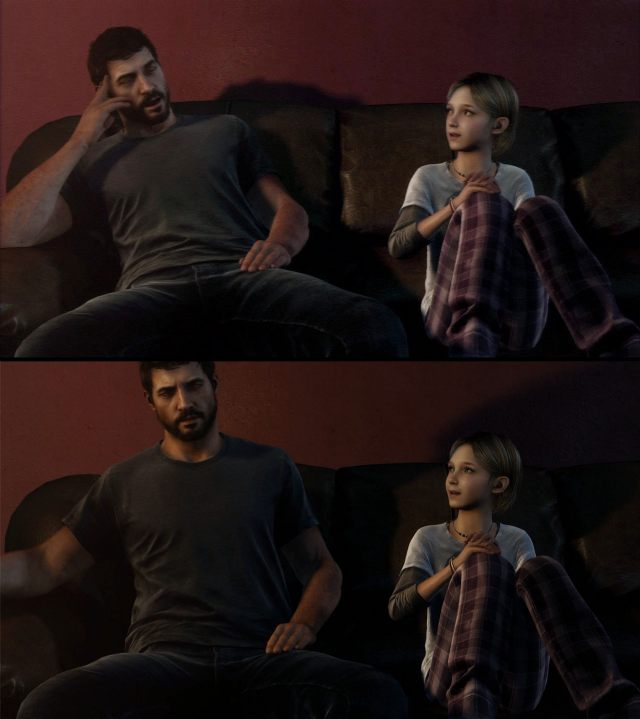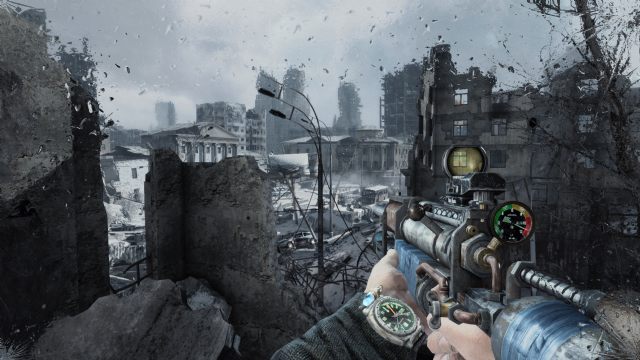The Generation of Remasters: Why Is There An Overflow Of Revamped Games
We live in a remastered world that surrounds us with revised versions of movies, new editions of well-known music CDs and games whose core versions have just been released a moment before. Are we the Generation R?
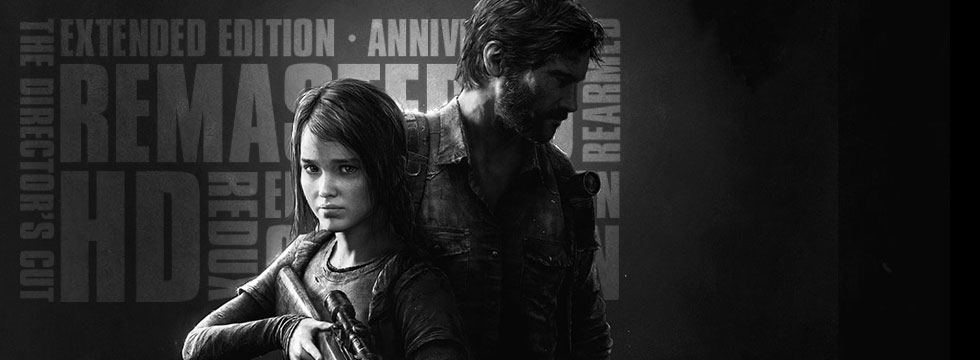
A remastered version. For several years, this phrase has managed to stir up the emotions of gamers, pitting them against each other as supporters and opponents of this phenomenon. The eighth generation of consoles (PlayStation 4, Xbox One and Nintendo Wii U) is a generation of remasters – this is a popular opinion, but is it entirely true? Whatever answer we give to this question, the fact remains that the trend of refreshing previously released titles is steadily growing stronger. However, this is not a new trend, as many complainers fail to realize when they criticize developers and publishers for their policies. The matter of remasters is a broad topic with roots going much deeper than it seems. Why are these productions still made? Let's try to find an answer to this question.
Remastering in the game industry is hardly a novelty. It could be argued that the phenomenon is at least the same age as the same process occurring in the music industry. Many of you may find it surprising, but the triumphant march of this trend began a very long time ago, namely in the middle of the 1980s. Of course, I don't mean porting games to other platforms, but making actual enhancements which are followed by the game entering the market circulation again, sometimes also on the core platform. It's a good idea to take a look at some interesting examples which will make it clear that the discussed phenomenon has already existed for a number of years.
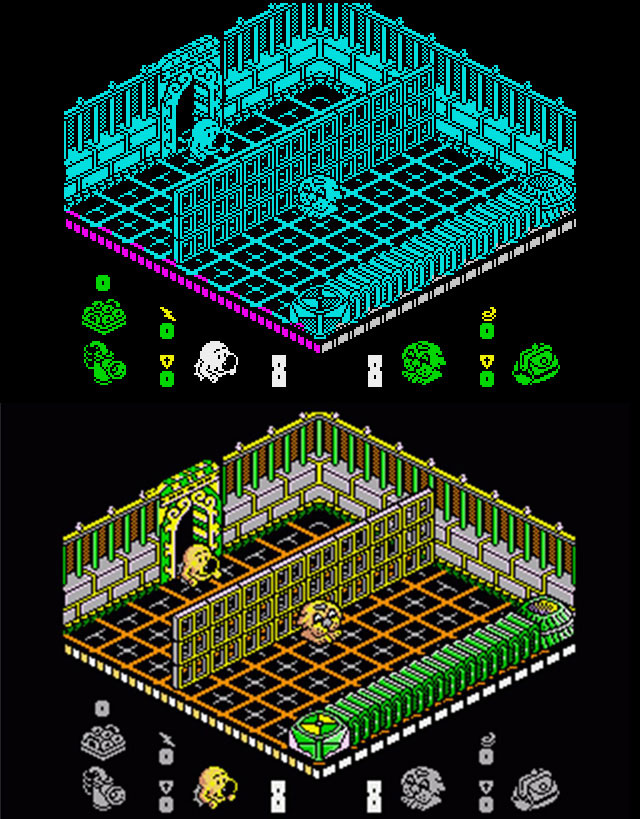
Remastering Through The Years As Seen On Selected Examples
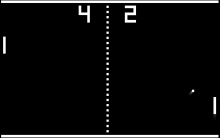
The First Remaster
We could simplify things (while perhaps exaggerating a bit) and assume that the first remaster ever was... one of the first games designed for the mass market – Pong. This simple production by Allan Alcorn was after all nothing but an enhanced version of the game Tennis for Two, written by William Higinbotham in 1958. One of the biggest differences between the two titles was the fact that the machine on which you could play Higinbotham's minuscule game was soon dismantled, whereas Pong became a huge commercial success. Is it possible then to avoid remastering?
One of the first notable remasters was the isometric adventure arcade game entitled Head over Heels, released in 1987 by Ocean Software. Reminiscent of the famous Knight Lore, the production designed for the eight-bit ZX Spectrum, Amstrad and Japanese MSX computers was hugely popular (the game press of that time held it in high regard) quickly resulted in the development of a re-vamped version with increased resolution, which went to the eight-bit Commodore 64 and Atari XL/XE as well as the sixteen-bit Amiga. This is an excellent example of how the game industry acts in the case of success, generating more profit by reaching new customers.
Sometimes, remastering is required when games hit the market and are met with the expected success, but very quickly become overshadowed by the competition that offers a similar product that is more modern and has the capacity to change the face of the entire genre. Such was the case of the clash of adventure games titans in the 1980s and 1990s, i.e. the companies Sierra On-Line and Lucas film.
In 1984, the players met Graham, a knight soon turned king of the realm of Daventry. It was a time when the market was still full of text-based games in which all interactions with the virtual world were made by typing appropriate key words. The program would then interpret the entered phrases in the way established by the programmers. King's Quest was a slightly more enhanced representative of the genre. Here, instead of having to imagine the world of the game, we were shown what it looked like with the use of simple graphics. The title met with enthusiastic reception, and made famous the name of Roberta Williams, one of the designers and co-owners of the Californian company. Following this success, Sierra began to release more installments in this series, while creating new franchises (Space Quest, Police Quest, Quest for Glory, Leisure Suit Larry), which operated on a similar basis. Soon, however, Lucasfilm and the introduction of SCUMM scripting language brought about a true revolution. Maniac Mansion no longer required laborious search for key words, but allowed to select predefined commands and then identify an object on the screen with the use of mouse and cursor. This is how the modern magic made its appearance; all that the bitter rivals could do was watch this new development with increasing apprehension.
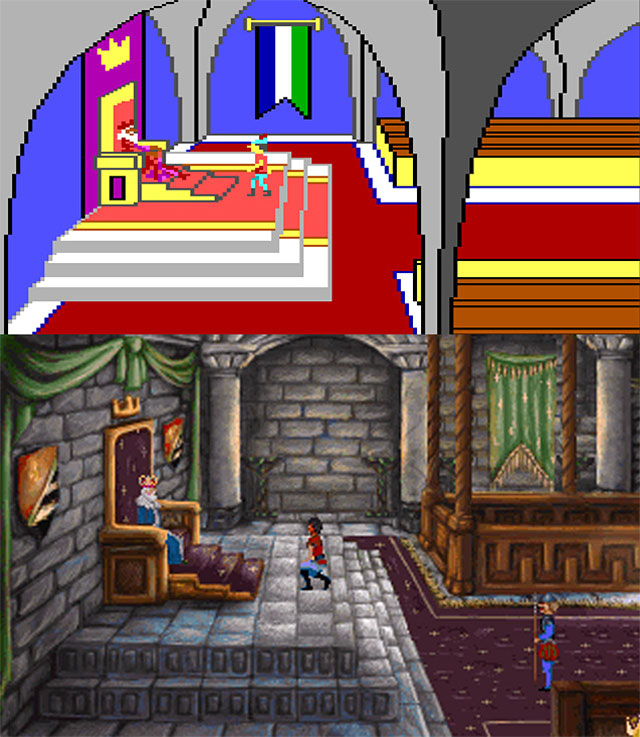
Lucasfilm’s checkmate did not last long, though. Soon all the first installments in the so-called Quests as well as the adventures of the wannabe playboy Larry were given upgrades. In other words, remastered versions appeared which changed both the user interface and the entire graphic design, beefing it up to reach the EGA/VGA standards. This clearly shows that sometimes the decision to issue this type of product is dictated by the advent of new technology. For the sake of accuracy it should be added that in the case of Sierra it were the players who took it upon themselves to refresh the older games. Lucasfilm, later renamed LucasArts, is also known for remasters. Two parts of the adventures of Guybrush Threepwood in the Monkey Island series have already been re-released, and soon we are going to get our hands on the revamped Day of the Tentacle. We cannot overlook Grim Fandango Remastered from Double Fine Productions, which sold nearly eighty thousand copies on Steam only.
Tex Murphy: Overseer, made in an adventure film style, was a remastered version of the game Mean Streets, in which the same hero was chasing after exactly the same villains. The only difference being that this happened nine years before in "our real-time." Once again, we can see that it was technological progress that forced – or perhaps encouraged – individual developers to delve into the same script one more time.
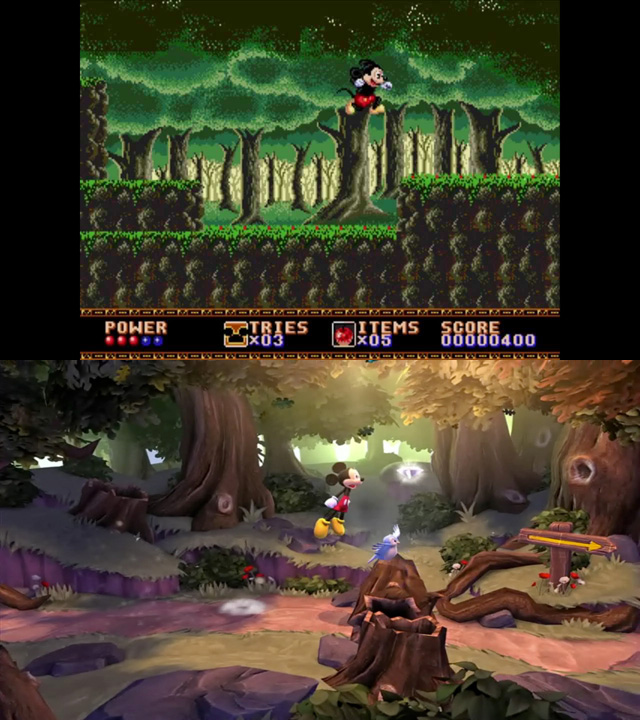
Today, the desire to keep up with the developing technology guides, first and foremost, Sony. The company’s policy consists in reissuing hits from PlayStation 2 in HD versions for PlayStation 3, to then announce another upgrade to full HD, this time on PlayStation 4. Recently, this has been the fate of Final Fantasy X and Final Fantasy X-2. The unforgettable bestseller from Nintendo 64, GoldenEye 007, was released for the previous generation of consoles as GoldenEye 007: Reloaded. Great platformer Duck Tales from NES and Game Boy consoles saw the light of day as a Duck Tales: Remastered. For the second time, Mickey Mouse was brought to life, continuing to wander through the titular Castle of Illusion as he did in the good old days of Mega Drive. Even Dune II: The Building of a Dynasty, considered to be the first RTS game (which happens to be far from the truth) was re-released as Dune 2000, with improved graphic design, control, and changed units; storylines have been added as well. And these are only a few examples of the phenomenon.
Companies can make some effort to save the game from oblivion, like it was done with the first part of the series Zork I: The Underground Empire originally released in the late 1980s, which finally received a remastered version after sixteen years for Sega Saturn and PlayStation consoles. This edition featured enhanced graphics, music and sound effects. Unfortunately, it only hit the Japanese market, effectively narrowing the pool of consumers.
Sometimes a remaster is created to adapt a game to working with modified control system. Resident Evil 4 can serve as an example. After conquering the hearts of players on Gamecube, and then moving on to PlayStation 2 and PC, the game also appeared on Wii which enabled us to wreak havoc among Spanish peasants using the wiilot. Occasionally, these are bad choices or lack of time to implement the right solution that bring about the important decision to publish a polished up version. This was the case with Metal Gear Solid 2: Sons of Liberty, characterized by a rather inconvenient camera control which forced the developers to reissue the game, with the addition of the word Substance in the title. This decision also created an opportunity to add another platform, as the game went to the first Xbox. While we're on the subject of Hideo Kojima, I must mention the remastered Snatcher, a cyberpunk adventure game that received an improved CD version for the consoles popular in the 1990s or the developer's greatest work, namely the first installment of Metal Gear Solid entitled The Twin Snakes, which was released as a revamped edition exclusively on Nintendo Gamecube. At some point, this Japanese device was the king of remasters – it’s worth it to mention the three refreshed parts of the Resident Evil series, of which only the first one recently made its way to other platforms after many years.
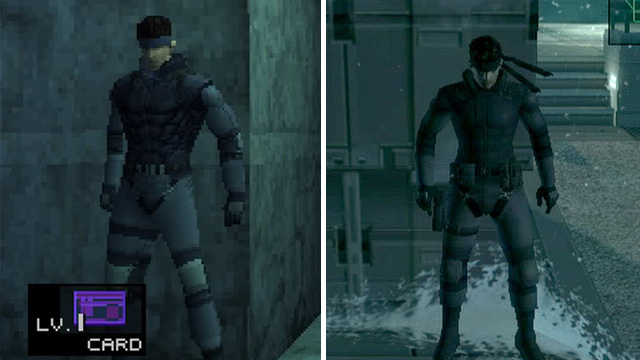
Let's not be overly idealistic. The only reason why the players are surrounded with remasters is money and the current fashion dominating the game market. To be more specific, it’s the retro fashion whose culmination is already behind us, as the part of the "oldie vibe" was taken over by indie developers who create games that faithfully reproduce or imitate the atmosphere of the past. Without reaching too far back and limiting ourselves only to the last generation, we can use Bionic Commando Rearmed as one of the first examples of successful remastering. Capcom took advantage of the nostalgia of the players who remembered the original version and seized the moment when the retro fashion reached its highest point, to release a game designed to obtain market success, mostly thanks to the Xbox Live Arcade and PlayStation Network services that were just starting to gain momentum. In other words, they utilized the opportunity of the emerging digital distribution. It became clear that the refreshed versions of hits from the past attract customers. Remastered editions of Joust, Jetpac Refuelled, 1942: Joint Strike, Teenage Mutant Ninja Turtles: Turtles in Time Re-Shelled are just a few examples that showed the direction and prepared the ground for real hits that appeared later in the form of Halo: The Master Chief Collection or the brilliant The Last of Us Remastered. It’s easy to notice that people like the things they are already familiar with.

The obvious reason for releasing remasters is also the fact that a franchise that is well-known and already present in the minds of players requires much less effort in terms of marketing. The money saved in this manner will probably satisfy the investors who, of course, expect the largest profit with the least possible contribution. The game industry, though certainly many people are still unaware of this, is not a charity foundation. Business is the most important aspect and understanding this fact is the first step to ensure a realistic approach to the prevailing market conditions. Remaster of a known franchise means that a flashy advertising campaign is not necessary, and it usually doesn’t require the work of staff writers and designers, because this effort had already been made by someone else. This observation is a little less applicable in the case of remasters created many, many years after the release of the core edition, but is a perfect match when it comes to games such as The Last of Us Remastered, where a smaller team took on the work, while the remaining employees were assigned new tasks. Once again, the developer and the publisher save money, and we gain knowledge as to why remastering is alive and kicking. This is also due to the completely new customers who haven't had a chance to buy the game earlier, or didn't even have the hardware necessary to run it. Perhaps some of them did not have any idea about the earlier games, but it’s here that the media or buzz marketing come to play. After all, something that had once been great should remain this way.
If anyone still thought that this perpetual motion of remasters will come to a halt eventually, an important argument should be raised that would not have existed at all until recently because of the shortsightedness of the marketing people. Namely, it is the lack of backwards compatibility. The global retail market is dominated by consoles that don’t provide help in the form of emulator (with the exceptions of the official releases of old games sold on CD as a set of legendary works of a publisher) of other machines and operating systems. The first model of PlayStation 3 with a 60 GB hard drive allowed to play most of the titles from the previous Sony consoles. Provided that Xbox 360 was hooked up with a component cable, there was no problem with playing a large part of the library of the first Microsoft console. It wasn't until the appearance of faster Internet connections and the current generation that we, the players, were done in. Suddenly, investing in games to put them on the shelf lost its purpose in the case of a decision to sell your equipment and purchase a new one. Now, we have to choose either to buy the remastered version or muster up some money to purchase the same production again in digital distribution. However, the revamped edition is far more tempting as it usually offers more stuff, and the content is available at 1080p and 60fmp. Luckily, Nintendo still prefers the old-school approach. Wii U allows to run all Wii games, but not those for Gamecub. It’s a half-measure, but at least there is one. Still, I would bet some serious money that future hardware from N will no longer have this feature. There is a huge temptation to earn more in the ever expanding eShop.
The industry operates in such a way not only because of the consent but above all the demand for remasters. From the perspective of the players, it may seem that the developers have become too lazy and cautious. The production of any game nowadays costs many times as much as what used to be called an extensive budget. A well-known franchise almost guarantees a return on investment and a profit. On the other hand, a promotion of a new title involves an enormous risk, and smaller developers are usually more eager to take it. Meanwhile, the tycoons are accountable to the board and shareholders. If an IP finally appears and meets with success, that metaphorical cow is milked dry by producing more sequels or remasters. Peculiar situations occur when after six months from the release date of a core version, a remaster is already in the works, as in the case Borderlands: The Pre-Sequel ! In the opinion of gamers, the new generation is starting to look like the generation of remasters and so the history comes full circle.
Is the described phenomenon a bad one then? I rather disagree. However, until recently it hadn’t been so intrusive. If you want to defend yourself against it, all you have to do is ignore this type of productions. The market is filled to the brim with so many excellent games and new franchises that everyone can find something that will pique their interest. Will the future bring about any changes? Even if this happens, remastered franchises and remakes will still be a permanent element of the landscape. We simply have to come to terms with this situation or... move on to a different pastime.
